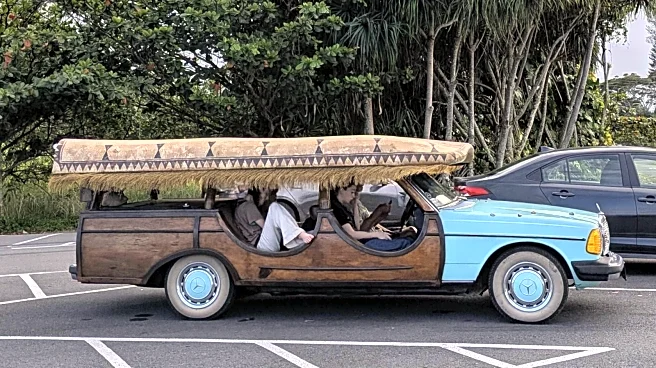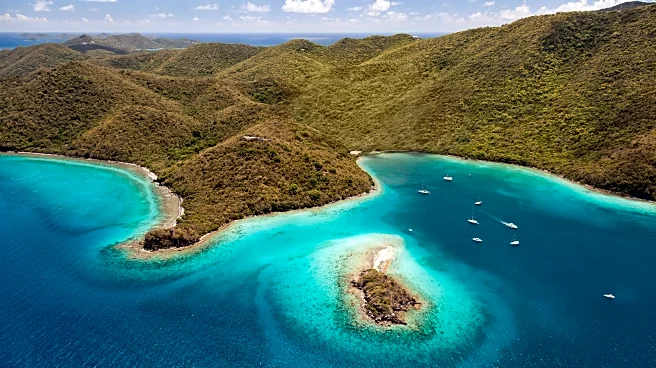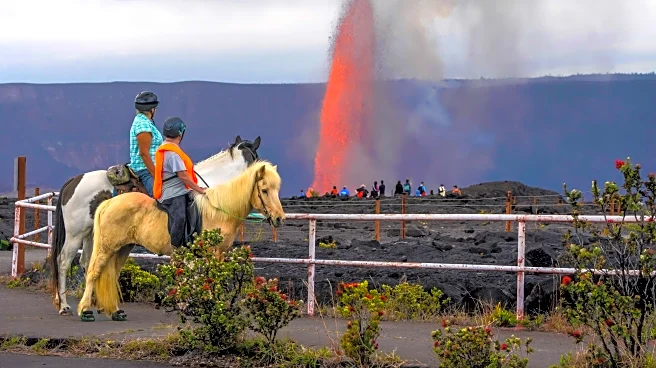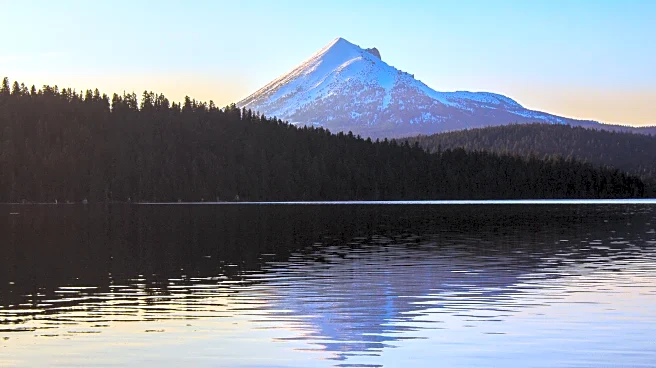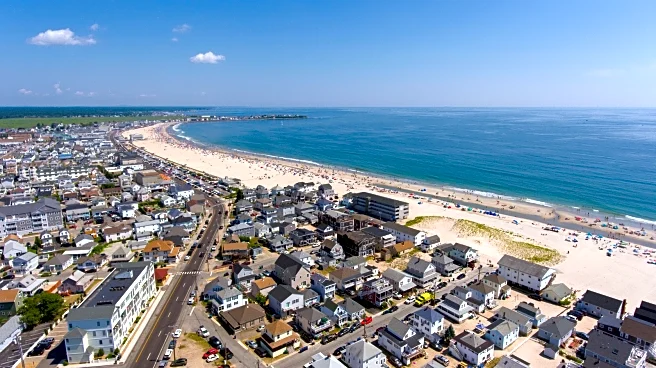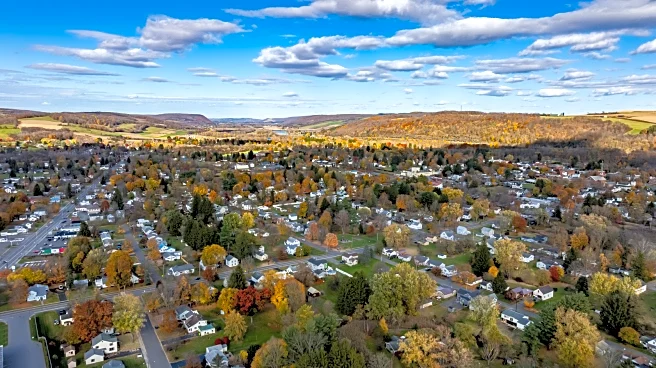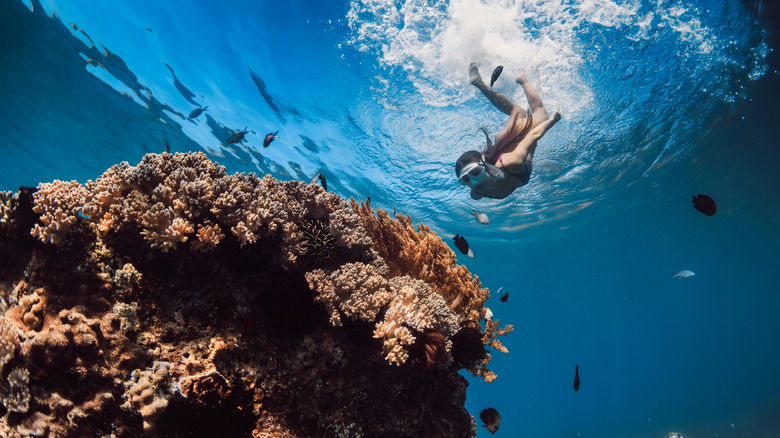
With warm tropical waters, sheltered coves, and beginner-friendly beaches offering calm conditions, shallow reefs, and an abundance of coral and colorful creatures, Hawaii is a snorkeling paradise. The reefs are a technicolor spectacle, teeming with bright fish, turtles, manta rays, and other marine animals — you can even see dolphins leaping from the water while you snorkel. You'll find most of the best spots on the leeward sides of Hawaii's islands, which generally have clearer and calmer waters than
the windward sides, but you should still consider summer for optimal conditions. You'll also have access to more of the best spots, as many transform from choppy winter surf zones into calm sanctuaries ideal for donning your mask and flippers.
However, Hawaii has snorkeling rules you must adhere to, primarily never to touch coral or any marine animals, which in Hawaii may be illegal. All sea turtles are protected under the U.S. Endangered Species Act, and it is recommended to admire them from at least 10 feet away. You might see Hawaiian monk seals, too, and federal guidelines advise you to maintain a 50-foot distance (150 feet for mothers with pups), while it's illegal to swim within 50 yards of spinner dolphins.
A guided tour will keep you right if you're in doubt. They'll also provide you with the gear and instructions you'll need if you're a beginner, and they may even be mandatory if it's to access world-class sites like Molokini Crater. However, they're not always necessary, beginner or not. The state has plenty of shore-access sites ideal for novices that open up a world of underwater adventures for free. So with that in mind, here are some of Hawaii's most stunning snorkel spots and the tours to book (if you need them).
Read more: The 5 Cheapest Islands In Hawaii For Your Next Tropical Vacation
Mauna Kea (Kauna'oa) Beach, Big Island
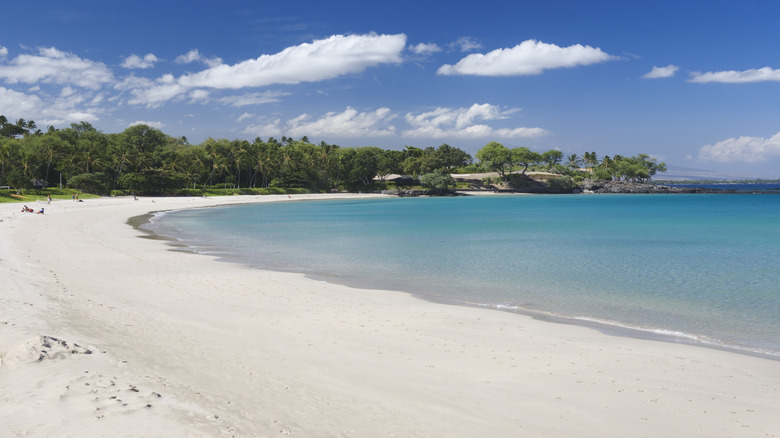
Just short of 30 miles north of Kona International is Mauna Kea Beach. The real name for this stretch of sand is Kauna'oa Beach, but tourists often refer to it as Mauna Kea after the hotel that is located directly behind it, and it's considered one of the most picturesque white-sand beaches on the island.
The sandy, crescent-shaped shoreline is roughly a third of a mile long, and it has calm, turquoise water for the majority of the year. The gentle surf makes it one of Big Island's safest swimming spots, but access by road is controlled by the hotel. Non-guests must obtain a free access pass, and only a limited number are issued daily. This does keep the crowds down, so arrive early to be one of the lucky ones to secure a spot.
The snorkeling at Mauna Kea is calm and more than suitable for beginners. It's unnecessary to book a tour; just make your way to either the northern or southern end of the beach and enter via the shore. The coral and marine life are more abundant at the southern end, while the northern side can be a little more exposed to surf and wind. The coral may not be the best on the island, with much of it bleached and some of it dead, but there are plenty of colorful fish that will enthrall young children and beginners alike. Sightings include yellow tang, parrotfish, Moorish idols, and wrasse. Green sea turtles are seen occasionally, and you may even catch sight of spinner dolphins. If you're a strong swimmer, you can venture out a bit farther, where you'll find larger schools of fish. Visibility is best in the mornings, and that's another good reason to arrive early.
Kahaluu Beach Park, Big Island
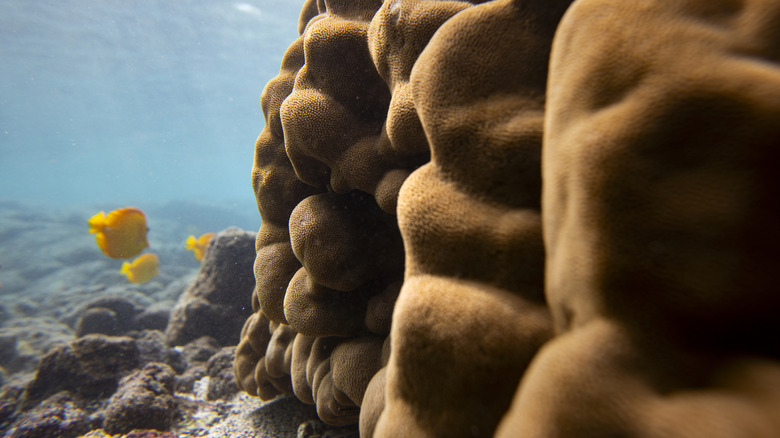
About 14 miles south of Kona International Airport and 5 miles south of the downtown area of Kailua-Kona is Kahalu'u Beach Park. Despite being less scenic than some of the island's northern beaches, it's regarded as one of the best swimming and snorkeling spots on Big Island.
Most visitors are chasing the high-quality water activities on offer, but it's also a practical spot for families with on-duty lifeguards and full amenities for comfort, cooking, and shaded relaxation. Additionally, entry to the reef is directly from the shore, and the shallow waters are in the 4-to-5-foot-deep range during low tide. Even at high tide, it rarely exceeds 15 feet, while an underwater wall built by ancient Hawaiians ensures conditions remain calm. All in all, Kahalu'u Beach Park is an easy-access snorkeling site perfect for families and novices, and you don't need to book a tour to enjoy it.
These shallow waters ensure direct access for sunlight to the coral, too, nourishing it and supporting growth, which in turn attracts a spectrum of marine life. Schools of fish enjoy the nutrients stirred up by sand close to shore, but you'll get better visibility if you swim out a little farther, and you can discover some bigger fish to the right of the cove. Common sightings include triggerfish, yellow butterflyfish, blue damselfish, polka-dotted boxfish, peacock bass, and porcupine fish, among many others, while green sea turtles are commonly seen feeding or resting on lava rocks. The beach is free and open daily from 7 a.m. to 7 p.m., but it's best to time a visit for the quieter mornings before the crowds start showing up at around 10 a.m.
Keauhou Bay (Manta Ray Village), Big Island
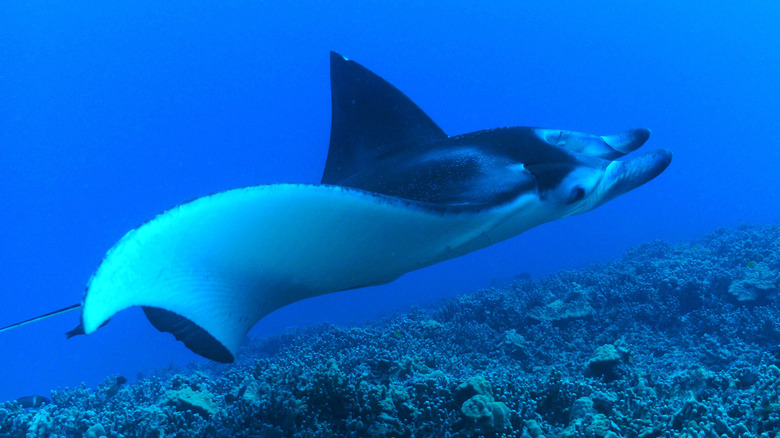
You'll find unique nighttime snorkeling just south of Kahaluʻu Beach Park at Keauhou Bay, commonly known as Manta Ray Village. To confuse things further, it's officially called Kaukalaelae Point. Whatever you decide on, it's one of three manta ray viewing sites in Kona and is located just offshore from the Outrigger Kona Resort & Spa.
The history of how it came to be is interesting. Back in the early '70s, the Outrigger was known as the Kona Surf Hotel, and the management at the time installed bright floodlights to illuminate the surf for their guests, which unintentionally attracted millions of plankton. This inevitably led to an invasion of hungry mantas, and over time, they were conditioned to feed at the site. Nowadays, the mantas are attracted to the light sources of tour operators, which provide lightboards that attract plankton and help snorkelers remain buoyant. While you float on the surface peering down, these amazing animals will glide by, often within inches underneath you (don't worry, they are not dangerous).
The site is only accessible by boat, and Hawaii Oceanic is a reliable operator that will take you in a small group and give you around 30 to 40 minutes in the water. Reviewers on Google rate the company highly, while around 700 Tripadvisor contributors have given it an average of 4.9 out of five. One customer summed up their experience by saying, "The sight of these gentle giants dancing under the blue light was simply mesmerizing," while one Google reviewer said, "The entire crew was knowledgeable and ensured a safe, fun trip for all."
Kealakekua Bay, Big Island
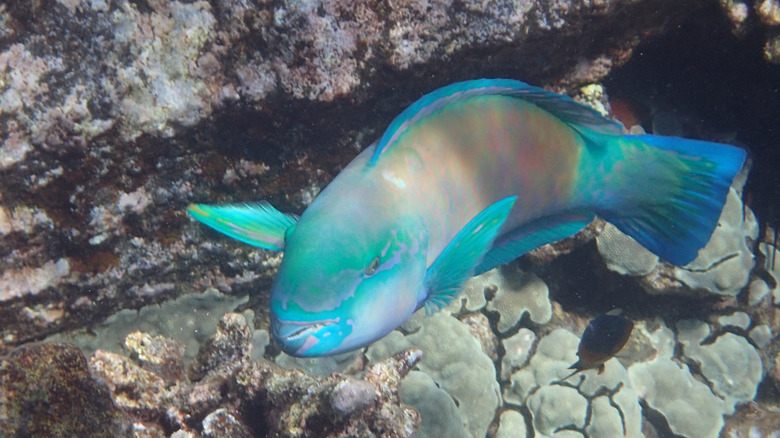
Kealakekua is a picturesque bay with stunning tropical reefs located on the west coast of Big Island. This protected marine sanctuary is host to calm, clear waters, underneath which the coral is vibrant and an abundance of marine life awaits. Yellow tangs, parrotfish, butterflyfish, and Moorish idols all burst with color, while green turtles and -- if you're early enough -- spinner dolphins also frequent the bay. Visibility can often exceed 100 feet, and you'll find the best snorkeling near the Captain Cook Monument at the north end of the bay. This marks the spot where the British explorer was killed in 1779, and it's here where you'll find the densest reef and most diverse coral formations, including large colonies of finger, lobe, and cauliflower corals.
Afternoon winds can cause a bit of surface chop, and strong currents can occur during the changing tides. Swells can make entry unsafe in winter, and marine hazards like sea urchins can be a problem, so you may wish to wear a pair of good water shoes, while inexperienced snorkelers should take a guided tour. You can get to the Captain Cook Monument via a steep hiking trail, which is about 3.8 miles for the round trip, but can be strenuous.
Instead, most people access the site by boat or kayak. For the latter, you'll need a permit; for the former, we highly recommend Hang Loose Boat Tours. They'll take you to the site on a spacious catamaran and provide breakfast and lunch, as well as historical and cultural commentary by the highly trained staff. The tour scores an outstanding 4.9 on Tripadvisor from hundreds of reviews, with one excited customer even saying that they "totally lucked out to find a humpback whale family!"
Two Step Beach, Honaunau Bay, Big Island
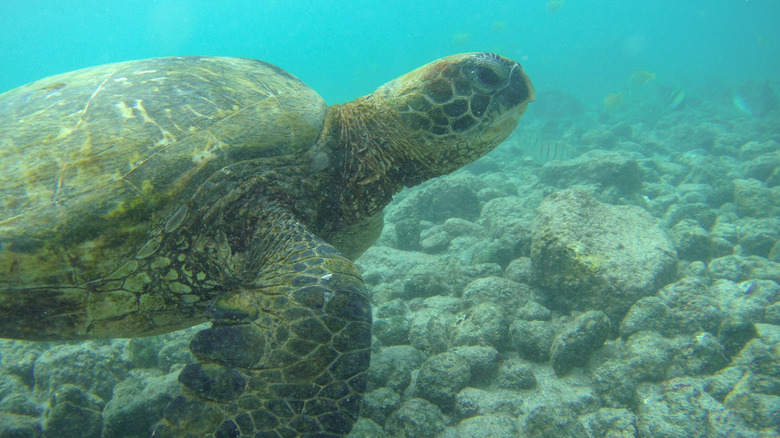
Just a 10-minute drive south of Kealakekua Bay is Two Step Beach. Take note, this is no idyllic stretch of sand where you pass your time between lazing in the sun and participating in gentle snorkeling. The shoreline is rocky, and while it is a suitable site for beginners, Two Step Beach is named after two natural rock ledges that are used to enter the ocean. The lower ledge drops into deep water; entry can be slippery and the coral can be sharp, so water shoes are recommended. During winter swells, surges and waves can make things a little more challenging, and if you plan to go farther from the shore, strong currents may persuade you to hire or buy a pair of fins.
However, don't let any of that put you off. Snorkeling at Two Step Beach is manageable for most, and any effort required is worth it. Visibility can often reach around 100 feet, and you'll find a healthy, diverse, and colorful reef with large colonies and drop-offs attracting a wide range of fish, including trumpetfish, raccoon butterflyfish, bird wrasse, pennantfish, and yellow tangs. Green sea turtles are frequently spotted by snorkelers, and spinner dolphins are sometimes seen in the morning. However, don't forget to pay attention to guidelines that advise not to approach or disturb either of them.
Richardson Ocean Park, Big Island
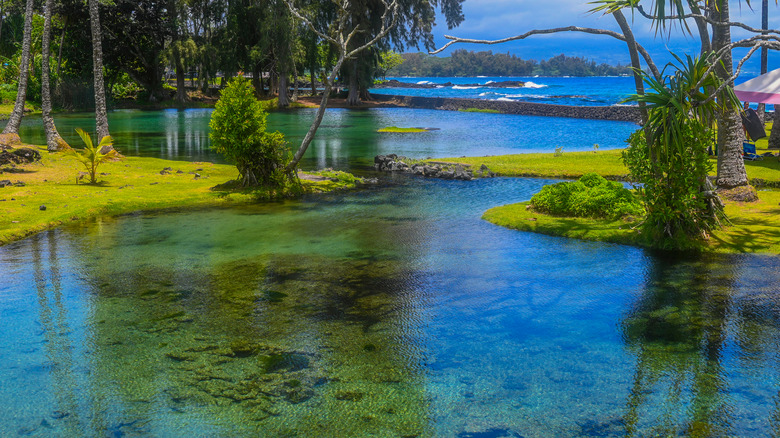
On the east coast of Big Island in Hilo, Richardson Ocean Park is the only black sand beach in the area. It was created by volcanic activity, and the sand features unusual olive-green crystals. More importantly, it's considered the best spot on this coast for snorkelers. Surrounding lava rock formations ensure that incoming waves are broken up to keep the park's coves and tide pools calm, even when the outside surf is heavy. The gentle waters are also shallow and complemented by current-free conditions, making it a particularly good spot for beginners and families to enjoy the underwater world it provides.
The sheltered waters are host to an abundance of colorful tropical fish, while you'll also see green sea turtles resting on the rocks or munching on algae in the shallows. Remember not to approach them so that they continue to be comfortable around humans. The tide pools host smaller marine creatures, such as crabs and juvenile fish, while the coral and rocky formations support schools of fish and provide hiding spots for eels. It's one of Hawaii's easier snorkeling spots, and no tour is necessary, whatever your snorkeling skill level. A lifeguard is also present for complete peace of mind.
Hanauma Bay, Oahu
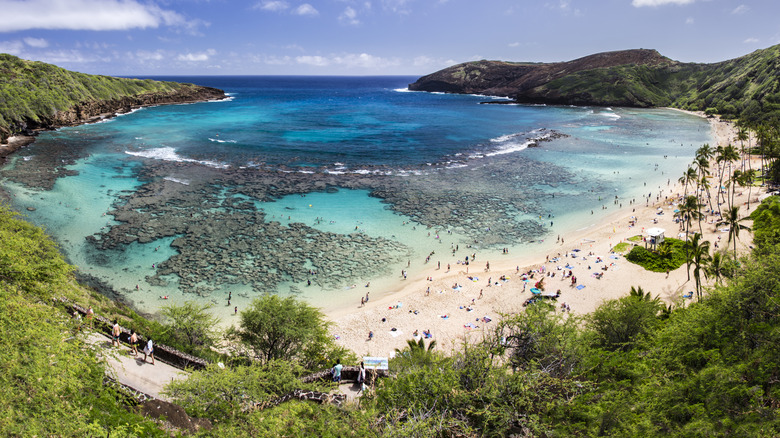
As the only beach in O'ahu dedicated exclusively to snorkeling, you can be sure a day of underwater exploration at Hanauma Bay will be a huge success. It's located around 12 miles from Honolulu in the southeast of the island, so getting there is easy. However, daily visitor numbers are limited, and you must make a reservation and pay a $25 entry fee beforehand. All visitors must also watch a nine-minute video before entering to learn about reef safety and snorkeling rules. A tour for Hanauma Bay is not required; they do exist, but they are just for transportation and equipment hire.
The bay is protected by vertical crater walls and a peripheral reef. So, once the formalities are done with, you can hit the calm, tranquil water and explore at your own pace. You'll discover around 70 species of iridescent coral, which is quite dense just offshore and ideal for small children, who'll see lots of colorful fish in shallow water. More than 450 species live in Hanauma Bay, and sightings of the state fish, the humuhumunukunukuapua'a, are common. You might need the rest of the day to learn how to pronounce that one correctly, but you can say triggerfish instead if it gets too much. Advanced snorkelers can explore the water beyond the main reef, where you'll catch sightings of green sea turtles and larger fish.
Kahe Point Beach Park (Electric Beach), Oahu
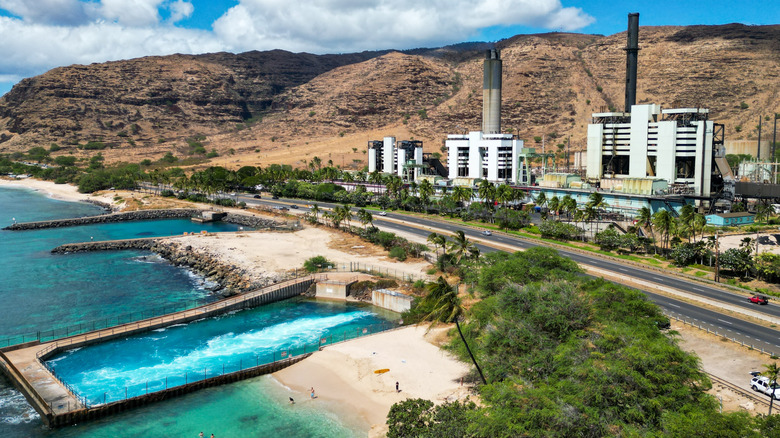
The Kahe Point Beach Park area is often called Electric Beach and sits on the west coast of O'ahu. With exposed conditions, waves, currents, and an absence of lifeguards, the snorkeling here is best left to confident swimmers. Additionally, the industrial landscape may not provide a postcard-perfect setting. But this is actually what contributes to it being a unique and secret Hawaiian snorkeling paradise. The nearby electric plant discharges warm seawater into the ocean, which attracts an abundance of sea life. You'll find most of it at the end of the submerged outflow tube some 500 feet from the beach. Sea turtles occasionally ride the currents here, too, and depths range from around 20 to 40 feet. Along the rocky cliffs to the left of the beach, you'll find a shallower area for snorkeling, with vibrant coral sitting at 6 to 25 feet.
Kahe Point is also a known resting area for Hawaiian spinner dolphins during the day, and if you're lucky, you may even catch sight of some friendly reef sharks, manta rays, and eels. Hawaii's most commonly listed reef fish are all in attendance, too, including snapper, goatfish, hawkfish, and mackerel, as well as crustaceans and invertebrates. Visibility in the area is a big attraction for snorkelers, with clarity reaching as much as 80 feet, which is clear enough to rival most other snorkel spots in Hawaii.
Beginners aren't advised to attempt the Kahe Point area, but tours are available that include dolphin and seasonal whale watching up and down the coast with a stop at Electric Beach. We recommend Ocean Joy Cruises, which boasts excellent reviews on both Google and Tripadvisor, particularly the former, where they have maintained an almost-perfect 4.9 from nearly 4,000 reviews.
Shark's Cove, Oahu
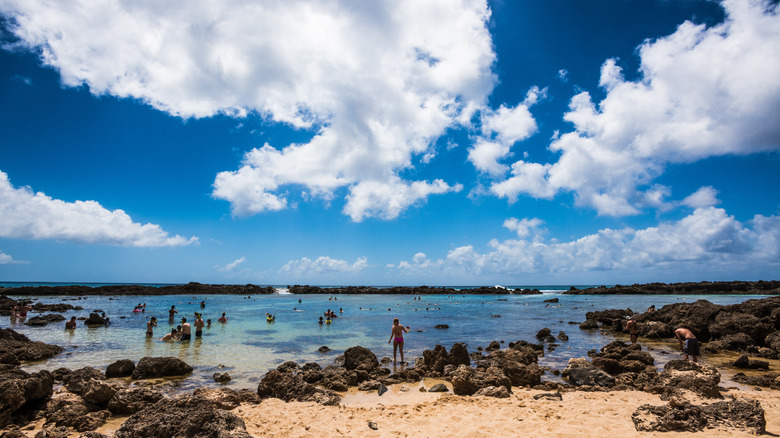
Similar to Two Step Beach on Big Island, Shark's Cove is a rocky, shore-entry site, but this time on Oahu's north shore. It's part of the Pūpūkea Marine Life Conservation District and is one of Oahu's best destinations for breathtaking views, as well as an excellent snorkeling spot — provided wave and tide conditions are right. Winter brings the most dangerous swells, but during the summer months from May to October, the bay is transformed into a calm haven.
The cove is also fairly shallow, ranging in depths from 8 to 15 feet and up to 20 feet at the mouth. However, visibility within it can be pretty poor, so you might need to swim to the outer areas. This means Shark's Cove is not really suitable for beginners and not recommended for small children. There are no lifeguards on duty at any time of the year, but a guided tour is not necessary as long as you are a fairly confident swimmer and don't mind the rocky entry — just forget snorkeling outside the summer months.
However, those who do decide to explore the water here are in for a treat. The calm summers attract schooling fish of perch, chub, and jacks, among others, on the surface, while down in the reef you'll see colorful surgeonfish, wrasse, tang, and many others weaving through a labyrinth of underwater caves and tunnels. The only disappointment you might have is the fact that sharks are actually an uncommon sight here.
Molokini Crater, Maui
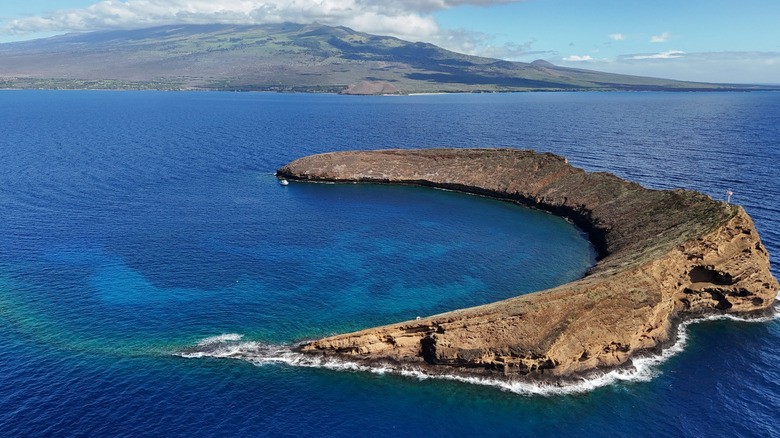
Molokini Crater is a 230,000-year-old crescent-shaped volcanic islet and marine sanctuary located off the southwest coast of Maui. This partially submerged crater forms a natural barrier and protects the inner waters from waves and currents. It's so calm and clear that it's one of the world's most sought-after snorkeling spots. Visibility can reach up to 150 feet, meaning you can see all the marine life in fantastic detail.
Getting there in the early morning offers peak conditions, but you can only access the site via permitted boats, which means independent snorkeling is not an option. Numerous tour operators offer trips from Maui, but Redline Rafting comes highly recommended. On Tripadvisor it holds an overall score of 4.9, while maintaining an almost perfect five from thousands of reviews on Google. One happy customer mentioned that "the snorkeling was out of this world" and followed up with "the vibes on the boat were great — relaxed, upbeat, and full of positive energy."
The crater is home to over 250 different kinds of fish, many of which are endemic to Hawaii. Common species include all the usual suspects from parrotfish to raccoon butterflyfish, but you'll also see moray eels and occasional manta rays, sea turtles, and friendly whitetip reef sharks. Tako Flats has the calmest water, and there are frequent sightings of octopuses and schools of barracuda. You may even get the chance to experience the backside of the crater. But take note: this side is for advanced snorkelers only. It's a steep drop-off with unpredictable conditions, but it does attract large marine animals.
Methodology
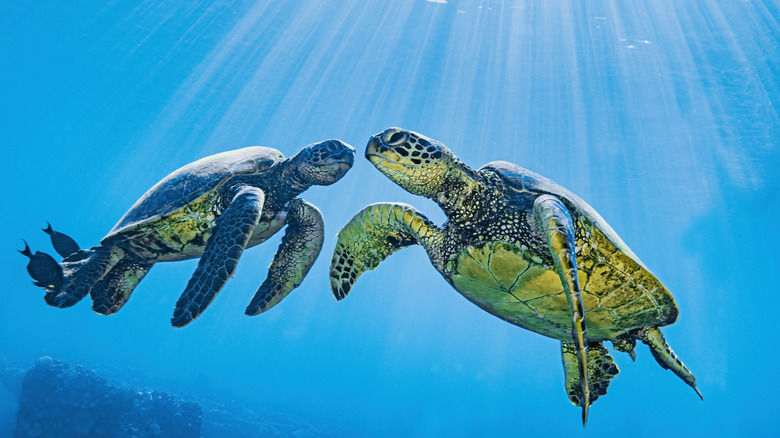
To find the best snorkel spots in Hawaii, we consulted reputable local websites, including GoHawaii.com and LoveBigIsland.com, as well as websites with expertise in travel and snorkeling, such as TropicalSnorkeling.com. We also consulted Hawaii-specific forums on dedicated sites like reef2reef, while Fodor's and Reddit also gave us insights. To ensure high-quality tour recommendations, we only considered those with very high average scores and equally high review numbers.
Ready to discover more hidden gems and expert travel tips? Subscribe to our free newsletter for access to the world's best-kept travel secrets.
Read the original article on Islands.
